QuestionWe found a red footed tortoise and I cannont find any clear answer about hybernation. I have spoken to people that put their tortoises in a box underneath their beds but when I try that, my tortoise wakes up every couple days. I then take him out to feed him, is this okay? Is it okay for them not to hybernate? If this is the case should I wake him up daily and be feeding him?
AnswerRed-foot Tortoises come from South American forests- they do not know how to hibernate and healthy Red-foots never hibernate. That is why there is no information on it.
The cares you describe are not recommended for any species. No tortoise 'hibernates' for two days at a time. A hibernating tortoise is at about 40-45 degrees, and stays in hibernation for one to six months. Under the bed is too warm and dry- those tortoises are in very poor health.
Red-foots are easy enough to care for if you are really interested. Once you have tried to return it to its owner, the basic cares are:
HOUSING: Try a large plastic tub. If the tortoise is under 4" long (shell length only), it can be in an under-bed storage tub (but not kept under the bed). A larger tortoise can be kept in a larger tub- figure about 100 square inches of floor space for every inch of shell length.
TEMPS: Warm the inside of the habitat to about 80-85F. Offering a warm end of about 88F and a cool end of about 78F is good. The best way to do this is to have it in a warmish room of about 75-78F and put a ceramic heating element over the warm end, but there are other ways as well. Use thermometers to track the temps, and never let the temps dip below 70F for very long.
HUMIDITY: Red-foots need humidity, The easiest way is to make a humid hide- a plastic shoebox or similar with a lid and a hole in the side big enough for the tortoise. Put an inch of damp (but not wet)sphagnum moss or other absorbent soil in the bottom of the box and park it in a warm part of the habitat.
LIGHTING: Rather dim. On for about 10 hours in the winter, 12 hours in the spring and fall, and 14 hours in the summer. Offer a lot of shade and hiding places.
SUBSTRATE: A wide variety of soil-mixes work for Red-foots. Avoid newspaper, wood shavings, etc. Try coconut coir (Bed a Beast), sphagnum moss, etc. with or without some clean sand mixed in.
DIET: For a simple starter diet, try:
- Mon., Wed,. Fri.- a mix of two of these: cactus pads (spines singed off), dandelion greens, turnip greens, escarole lettuce, or endive lettuce OR a package of Spring or Mediterranean Greens salad mix.
- Tues., Thurs.- A mix of two of these fruits: dark plums, strawberry, any melon, pineapple, mango, papaya, kiwi, cactus fruit.
- Sat.- a different fruit- oranges, apples, pears, other berries, banana
- Sun.- leftovers and some 'meat', such as hard-boiled egg (with shell), earthworms, Superworms, cooked chicken, or beef heart. You can use a little canned quality dog food once in a while.
There are a lot of other diet plans, but this will get you started as you learn more.
For more cares, try http://www.redfoots.com or http://www.tortoisetrust.org
If you decide this is too much, there are a lot of people who will adopt this tortoise from you. I can help you find someone, or you can try http://www.tortoiseforum.org

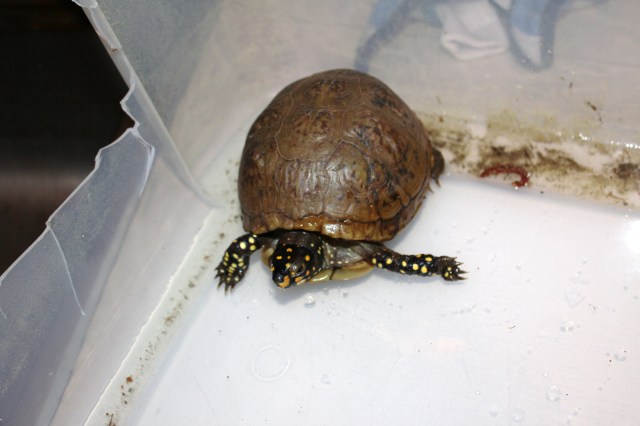 Help identifying a turtle
Question
Turtle
I need help identifying this turtle I f
Help identifying a turtle
Question
Turtle
I need help identifying this turtle I f
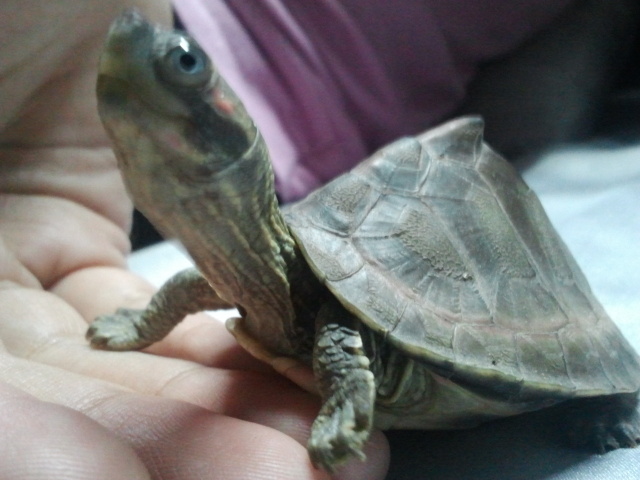 spieces of my turtle
Question
my turtle
jeannie i just want to ask i
spieces of my turtle
Question
my turtle
jeannie i just want to ask i
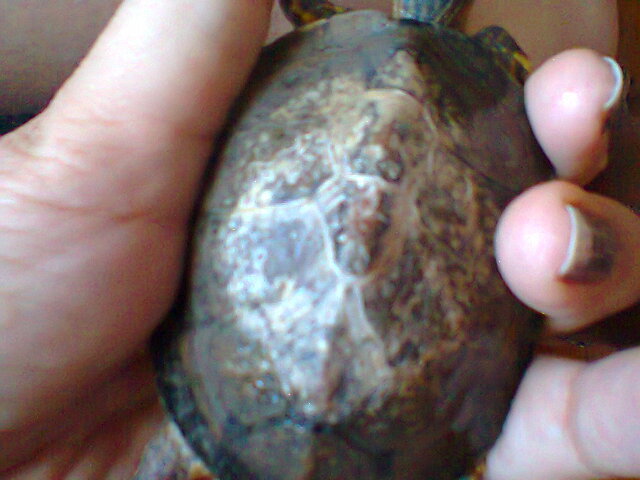 guide for my turtle-tuty
QuestionQUESTION: hi,
i have a Indian Roofed Turtle (Pa
guide for my turtle-tuty
QuestionQUESTION: hi,
i have a Indian Roofed Turtle (Pa
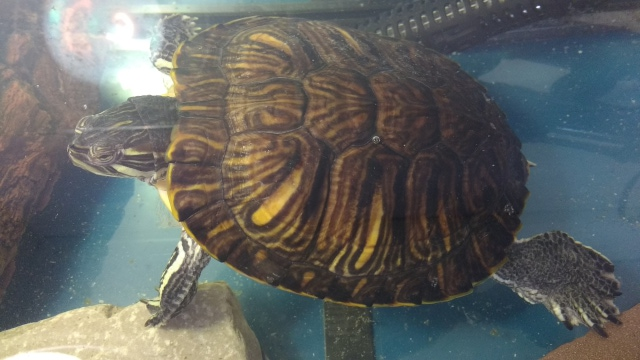 What kind of turtle do i have?
Question
Turtle above turtle ear
What type
What kind of turtle do i have?
Question
Turtle above turtle ear
What type
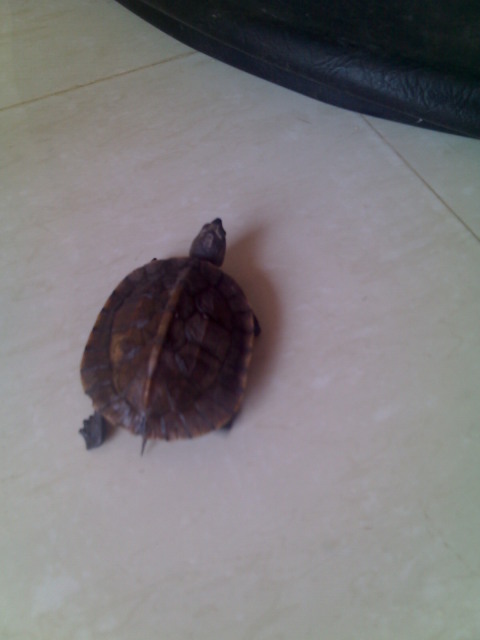 How do I care for an Indian Black Turtle (Melanochelys trijuga)
Question
Pic of the turtle
Hi,
I am am animal lover li
How do I care for an Indian Black Turtle (Melanochelys trijuga)
Question
Pic of the turtle
Hi,
I am am animal lover li